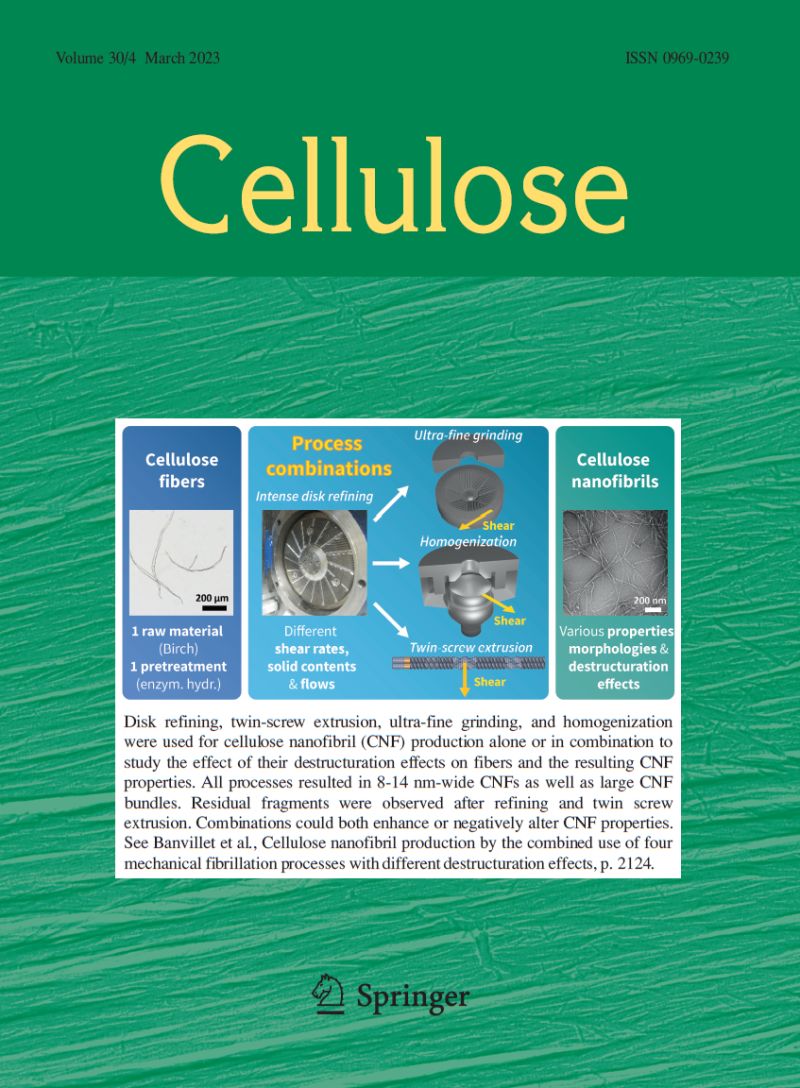Controlling the rheology of cellulose dissolved in 4–methylmorpholine N–oxide and tensile properties of precipitated cellulose films via mixture design
Abstract
Properties which control the mechanical performance of regenerated or precipitated cellulose films are currently not well-known and a mechanistic understanding of the underlying phenomena should be established. Solution rheology is a crucial property for casting films and spinning fibres in terms of process runnability, and it can have a considerable effect on the mechanical properties of the prepared cellulose products. We hypothesized that the viscosity of cellulose dissolved in 4-methylmorpholine N-oxide (NMMO) and the mechanical properties of precipitated cellulose films could potentially be improved by controlling the molecular weight distribution of cellulose pulp, taking inspiration from traditional plastic industry. We evaluated the effects of pulp blends on the viscoelastic properties of dissolved cellulose-NMMO dopes and used the dopes to prepare cellulose films and determined their mechanical properties. Lastly, we employed the determined dope and film characteristics to build linear regression models for predicting dope rheology and mechanical performance of films. Mixture films with 2:1 and 1:2 ratios of pulps with both medium and high degree of polymerization showed in average 36% and 46% higher toughness than their unimodal versions. The model results demonstrated that film performance could be tailored by changing the pulp composition. These findings play an important role in optimizing the future processability of dissolved cellulose dopes for producing bio-based cellulose materials and could bring us a step closer to traditional plastic polymer disciplines by tailoring their performance based on pulp properties.
Graphic abstract

 求助内容:
求助内容: 应助结果提醒方式:
应助结果提醒方式:


